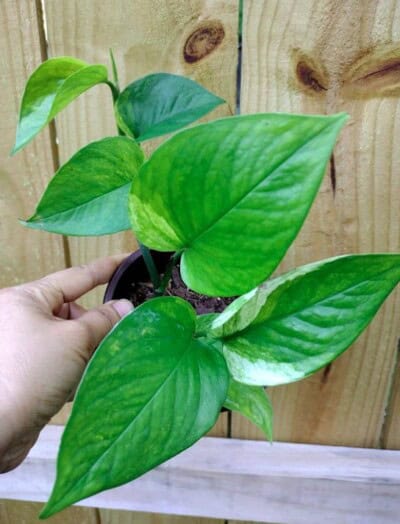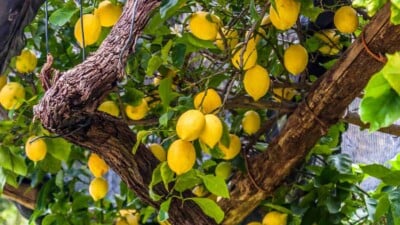Snow Mold
How to keep lawns exposed to wet springs and slow-melting snow from falling to disease.

The vagaries of climate variation across the country this winter suggests that we might be seeing the dreaded gray snow mold surface in lawns where it hasn’t been seen before. Those of us familiar with late snow covers, cold, damp springs, and other conditions favorable to lawn diseases are well familiar with this problem.
Gray snow mold is a common problem in areas where snow cover persists into the spring as temperatures warm. It shows itself in circular or irregularly shaped gray or brown spots in the lawn that can range from an inch or two across to over a foot or more. Fuzzy gray strings, known as mycelia, may stretch across and out from the area, especially as the snow melts.
The grass in the circles can die out leaving brown patches in an otherwise green lawn. These brown spots seemingly recover as the season progresses (they won’t if infected with pink snow mold (PDF) which can kill the crowns and roots of grass as well as leaves). Examined closely, the brown grass hold dark masses (sclerotia) where the disease resides.
With the right lawn care products going organic is easy! Planet Natural has everything you need to guarantee the healthiest outdoor environment possible. Need help? Our Lawn & Landscaping Blog provides the ideas, information and practical experience you need to get the job done right.
I spent years thinking that those gray strands that spread across my lawn as the snow receded were a natural occurrence (they are) that did no harm to my lawn. It took a while before I connected them to the brown spots that seemed to increase in number each spring. These brown spots mostly disappeared as the season progressed, another factor that made me think this was largely a cosmetic problem. But the problem continued to spread. My slow awakening to the connection between those threads and the dead spots is an object lesson in what a little knowledge can do in preventing difficult landscape problems.
Like many lawn disease problems, snow molds can be kept to a minimum (PDF) through proper lawn care and culture. This involves mowing lawns in the fall even as they go dormant. Lush grass growth, especially when compacted under snow, give the disease the perfect place to incubate. Make sure to clean your lawn of mowed grass and leaves in the fall to prevent giving the spores a place to overwinter. Feeding your soil nitrogen in the fall, thus encouraging growth right up until the first snow, will also exacerbate the problem. While we’ve sometimes recommended early fall applications of compost on your lawn, we’d advise against it if you’re having trouble with snow mold.
Almost all the principles of good organic lawn care will help prevent gray snow mold. Make sure your soil is of top quality (but see nitrogen above) and hosts strong populations of microbes that will attack stray spores. Adequate drainage is important. Compacted soils keep the top layer moist longer after snow retreats, thus encouraging the disease. Managing thatch and areas of heavy traffic are also important.
Some lawns in high snow areas will use snow fences and wind breaks to keep snow from piling up on lawns– this technique is commonly seen on golf fairways and other large grass areas. I found gray snow mold getting a foot in the door where I piled snow from my driveway. Let’s face it — there’s not much one can do about snow collecting next to where it’s shoveled. That’s why the previously mentioned lawn care suggestions are so important.
What can the organic gardener do if gray mold is already established? The first thing is not to forsake your organic principles. Many of the fungicides used to treat commercial lawns, including Quintozene (PCNB), aren’t recommended for home lawn care because of the severe effects they can have on health and the environment.
Instead, try solarizing the brown patches as soon as possible in the spring. This involves covering the patch with clear plastic so that sunlight will heat the soil enough to kill the disease. The Gardener’s Guide To Common-Sense Pest Control recommends solarizing any section of lawn that you plan to replant. The process will destroy other blights and diseases as well as snow mold, giving you a clean slate of soil in which to plant new grass.

Again, encouraging microbes with compost or other soil amendments during the growing season will combat the disease. We’ve also heard that garlic and neem oils will stop the reproductive process of the fungi. Soaking infected areas with iron sulfate solutions (scroll down) will also help if used promptly (iron sulfate is often used to “green” lawns and kill moss).
As is often the case in lawn care and organic gardening in general, prevention is the best way to deal with gray snow mold. If you live in an area where snow conditions linger into the spring, especially when temperatures are above freezing yet still cool, it’s best to be proactive against the mold.
Using herbicides, chemical fertilizers and other weed and insect killer on your lawn has been shown to actually weaken grasses and reduce soil health. That’s the first step to a healthy lawn: getting off chemicals. The second is to grow thick healthy grass by improving your soil. We’d love to hear any experiences you’ve had with gray snow mold and other lawn diseases, especially success stories. As our mother used to say, long before computers: write.












